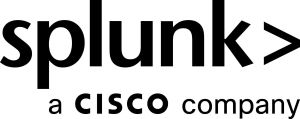Web proxy data
Web proxy data refers to the information generated, collected, or analyzed by a web proxy server as it intermediates communication between client devices and web servers. A web proxy acts as a gateway, forwarding client requests to the internet and retrieving responses on their behalf. Web proxy data includes logs, metadata, and analytics that capture details about web traffic, such as requested URLs, user IP addresses, access times, and filtering decisions.
This data is valuable for monitoring internet activity, enforcing security policies, filtering web content, and analyzing user behavior. It is commonly used in enterprise environments, schools, and other organizations to ensure safe and efficient internet usage.
Web proxy data typically includes:
- Request data: This refers to information about web requests sent by clients through the proxy
- Response data: This includes details about responses received from the requested web servers
- User and device metadata: This includes data about the users or devices that made the requests
- Bandwidth and traffic usage: This includes information about the amount of data transferred through the proxy
- Filtering and security data: This includes data about blocked or filtered web traffic
- Time-based data: This includes information related to the timing and frequency of requests
- Authentication and access control data: This includes details about user authentication, access policies, and permissions
- Real-time threat intelligence data: This includes data related to detected threats or suspicious activities
- Cache data: This includes details about cached web content to improve performance and reduce bandwidth usage
- Performance metrics: This includes information about the performance of the proxy server
The Splunk Common Information Model (CIM) add-on contains a Web data model with fields that describe web server and/or proxy server data in a security or operational context.
Add-ons and apps
- Splunk Add-on for Squid Proxy
- Splunk Add-on for NGINX
- Splunk Add-on for Check Point Log Exporter
- Splunk Add-on for McAfee Web Gateway
- Add-on for McAfee/SkyHigh Web Gateway (MWG/SWG/MWGCS)
- Splunk Add-on for Symantec Blue Coat ProxySG
- Splunk Add-on for Palo Alto Networks
- Splunk Add-on for Fortigate
- Splunk Add-on for HAProxy
- Fortinet FortiGate Add-On for Splunk
- Cisco Umbrella Connector
- PAVO Web Proxies App for Splunk
- Zscaler
Use cases for the Splunk platform
- Running common General Data Protection Regulation (GDPR) compliance searches
- Finding large web uploads
- Monitoring NIST SP 800-53 rev5 control families
- Detecting TOR traffic
- Detecting network and port scanning
- Managing firewall rules
- Monitoring for network traffic volume outliers
- Reconstructing a website defacement
- Detecting the use of randomization in cyberattacks
- Configuring Splunk add-on for McAfee/Skyhigh Web Gateway

